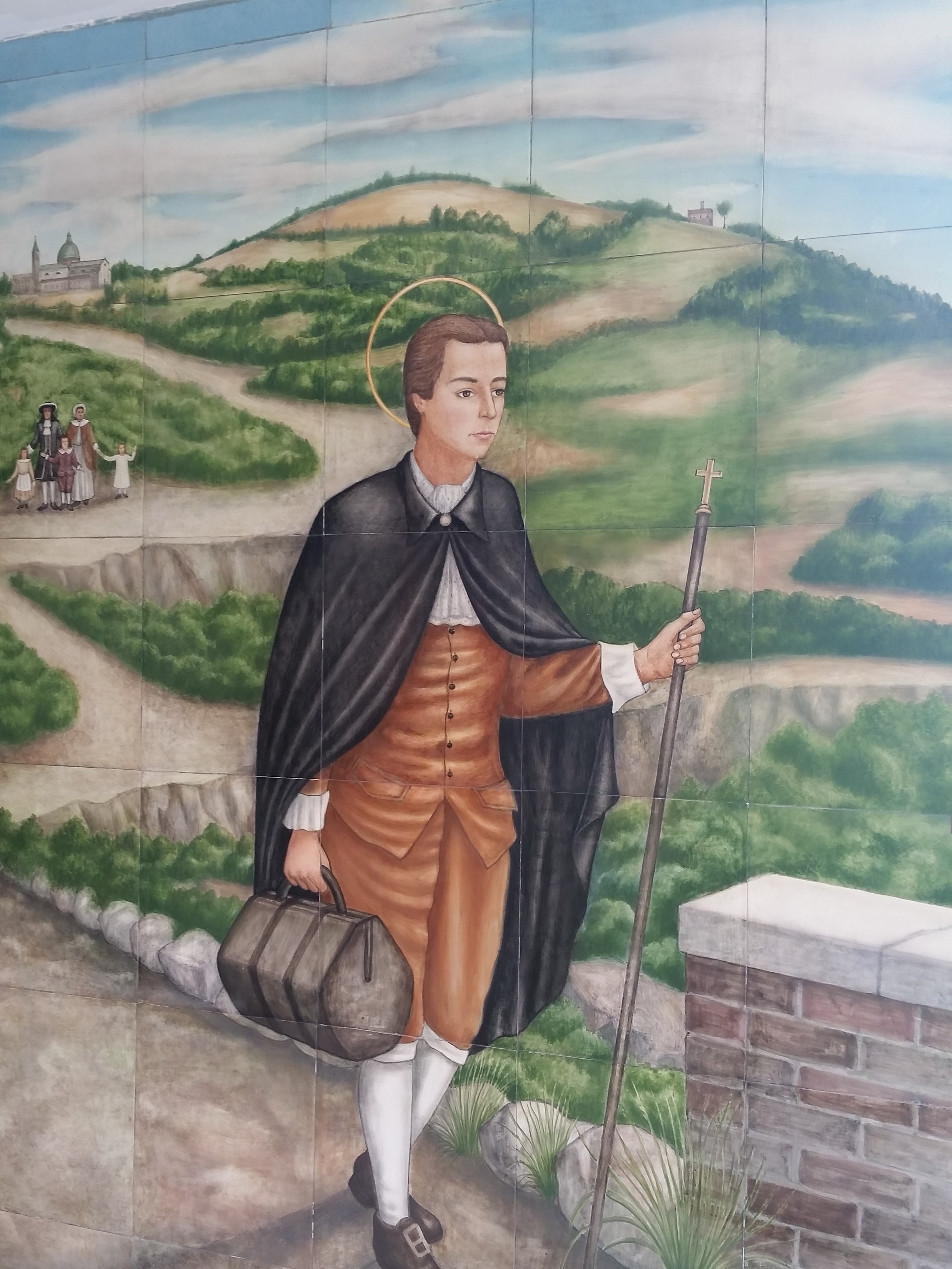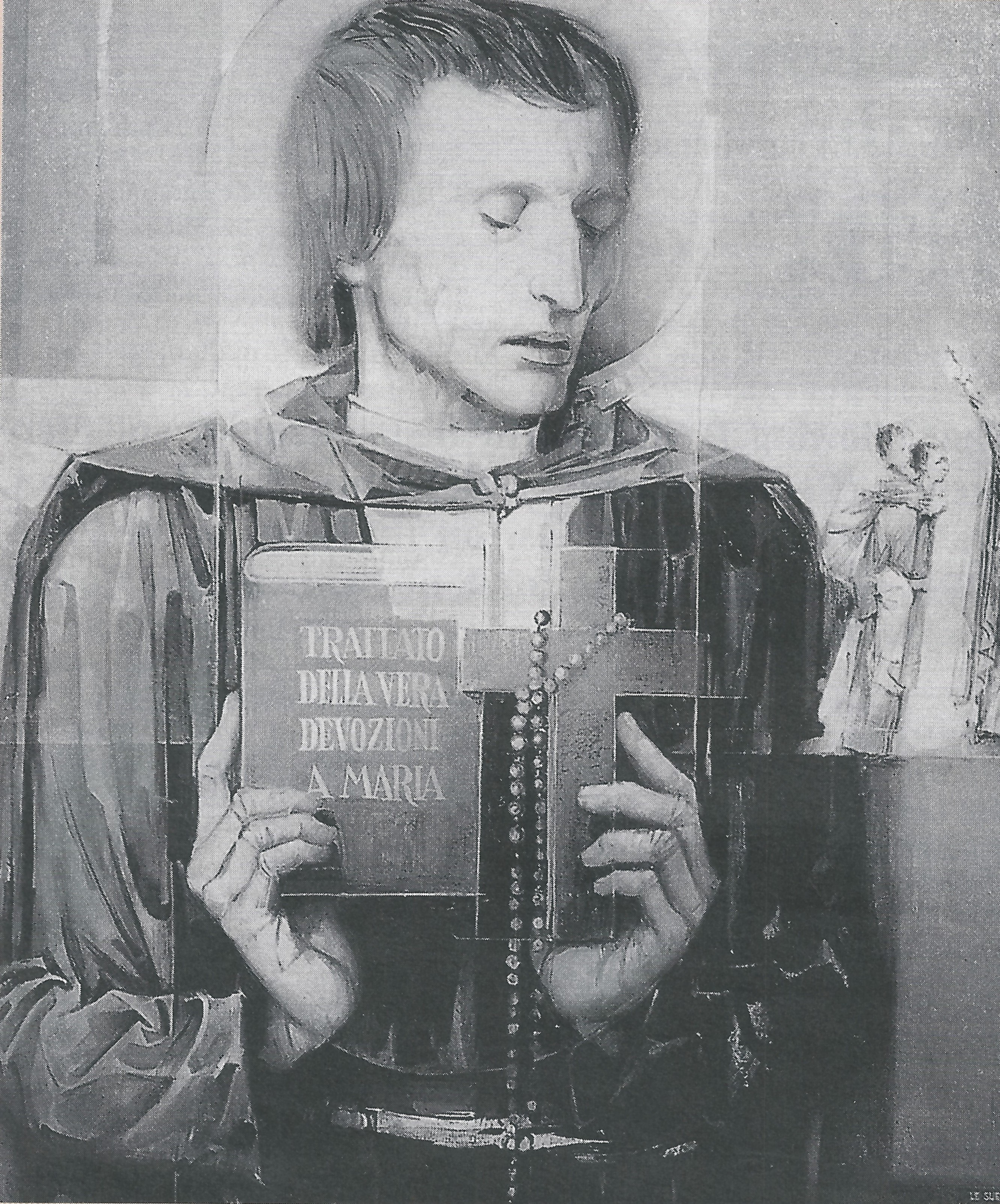Saint Louis Marie de Montfort
An Often Misunderstood Saint Part XI: Concluding Thoughts
Fr. Patrick Gaffney, SMM
Presuming you have read the first ten articles of this series, on “Montfort, An Often Misunderstood Saint,” read this final one and we believe you will agree that Father Gaffney, SMM has succeeded in giving us an in-depth and scholarly approach to a very important key to the life and writings of this giant among the Saints.
Note written by Fr. Roger Charest, SMM.
S aint Louis de Montfort could not restrain his love for the Lord, he could not just “keep it in his heart.” He overflowed with it. It is this key insight into his personality which makes us understand why he has been compared to a roaring torrent cascading down a mountainside taking everything along with it, or a burning fire that burns everything it touches into flame. His life was an externalization of his incredible oneness with Christ. There is a word that many if not most people use to describe such a rare phenomenon: eccentric.
This trait of Saint Louis de Montfort becomes clearer when he is compared to another citizen of the 18th century, H.S. Reimarus – a famous German whose posthumous writings initiated the Quest for the Historical Jesus. A professor of oriental languages, a quiet church-going man, Reimarus was seething inside with a burning conviction that Jesus was no more than a failed political messiah. But he never publicly manifested it. Neither from his words nor his actions, did anyone, not even his wife, suspect Reimarus’ true identity. When after his death, his wife found reams of notepads filled with angry arguments to prove his point, she was so shocked that she hid them to preserve his good name and the reputation of the family.
Saint Louis de Montfort was totally other; he could not put on an act as Reimarus did. Everyone knew his thought: “I speak my mind openly,” he writes from the Poitiers work-house to Father Leschassier. And although only a few months after his ordination, he reveals a “secret attraction for a hidden life in which I can efface myself,” he reveals his true nature when he writes a year later: “I have no inclination at all to lead an enclosed life.” Louis de Montfort had to be on the outside who he was on the inside. His love for externals, seen in his rules, community prayers, pro- cessions, confraternities, religious garb, gospel dramatizations, is the manifestation of his soul, pouring over with zeal for the Kingdom.
The lifestyle of St. Sulpice was such a crucifixion for the young Louis Grignion because it forbade anything but the most moderate, restrained expression. His sincere and painful attempts to live his spiritual director’s injunctions against “singular external devotions” – which appears to be Leschassier’s persistent and most basic directive – never succeeded. Montfort could not turn himself inside out, even though in obedience to his director, he constantly tried to do so, during his four years at Little St. Sulpice. Once in priestly ministry, he more and more – so naturally, so unconsciously – externalized his intense love of God and the poor, completely frustrating his director. Montfort’s youth, right up to his ordination and to a lesser degree even a year or two after, appears to be a battle against himself. Attempting to discard his gifts of nature and grace in order to follow the then accepted rules of clerical decorum, he underwent a painful period of his life. For his own good and for the good of the Church of all times, God is to be praised that Father Leschassier failed to remake Louis Grignion.
It is Montfort’s artistic, highly demonstrative nature – so filled with the Spirit – which is the hermeneutical key opening up those “mysteries” of his life and especially the most fundamental one, his “singularities.” His dress, missions, preaching, Calvaries, pilgrimages, his “eccentric” ways all have the stamp of his expansive personality. In a certain sense, Saint Louis de Montfort had to incarnate his desires for Jesus, Wisdom Crucified, and also his yearning to be Jesus-Wisdom by seeing the outcasts of society. Since his yearnings were so profound, his enfleshment of them – in actions, words, attitudes – took on such reality that it stunned, amazed, especially the clergy and in a particular way, some of his ecclesiastical superiors. Some thought it best to rid themselves of the riddle.
These “singularities” continued through all his life. About two years before his death, Montfort, although exhausted, traveled on foot to Rouen to visit his friend Blain, probably hoping to recruit him – perhaps even as director – for his Missionaries of the Company of Mary. On that score, the visit was a failure. However, Blain’s description of Montfort tallies with his appearance as a younger priest: “He arrived at noon in the company of a young man; he had walked six leagues in the morning on an empty stomach wearing an iron chain round his body and bracelets on his arms, he always wore some instrument of penance, often several, and never removed one without taking another. . . .” And when giving a conference to school-teachers at the request of Blain, Montfort got “carried away, as it were, by his enthusiasm” and called out to a young lady in the audience: “You are constantly staring at me. Is it fitting for a young lady to stare at a priest?” And when Blain later reprimanded him for unnecessarily embarrassing the young woman, Father de Montfort could not even recall having done so. What was probably in his mind, he had to express, almost unconsciously.
On his way back to La Rochelle from Rouen, he got on a ferry filled with about 200 people. It was market-day and “the usual subjects of conversation were of the coarsest kind and the songs were sometimes lascivious,” as Blain remarks. Louis de Montfort, typically, had “barely set foot on the boat when he knelt down in the presence of all the passengers and taking his big rosary in his hands, exhorted his fellow-travelers to pray with him. When met by coarse jokes and bellows of laughter, he repeated his request with so much evident urgency and sincerity, that all joined him.
Louis de Montfort remained “eccentric” throughout his life. If they are, to some degree, less apparent during the final years of his life the credit must go to the Bishops of La Rochelle and Lupon who not only esteemed him as an exceptionally holy priest, but understood him and defended him, thereby integrating him into the evangelization of their dioceses. His final public appearance was the final eccentricity of a saint: against the advice of his associate, Father René Mulot, he dragged himself, burning with a deadly fever, from his bed of straw into the pulpit of the parish church of St. Laurent-sur- Sévre. He had to express, one last time, his mystical love for Jesus and Mary. His last proclamation of the Word summarized the depth of his union with God: the tenderness of Jesus and Mary. Montfort eccentric? Definitely yes. He could not be otherwise, considering the mystical gifts which more than filled his demonstrative nature.
This is the root of his squabbles with some of his superiors. This is the reason why Saint Louis de Montfort was, and still is, an often misunderstood saint.
(Article Series: The End)


Tile mural depicting a scene of St Louis de Montfort’s Life
This mural appears immediately outside the chapel in Montfort’s Spiritual Center. The scene depicts Louis Grignion’s leaving to begin his studies in Paris. Louis Grignion walked to his destinations and this journey was no different. It is over 250 miles between the towns. He would give up his clothes and money along the way.
The second image is a sketch of St. Louis de Montfort from our Italian Magazine, Madre e Regina, published in Rome. The image shows Fr. de Montfort, the spiritual guide to Jesus, holding up three symbols of his well known writings: True Devotion to Mary, The Secret of the Most Holy Rosary, and Friends of the Cross. This image graced the Queen of All Hearts Magazine in May 1998.
The mural is one of the six scenes in the chapel.
His last proclamation of the Word summarized the depth of his union with God: the tenderness of Jesus and Mary. Montfort eccentric? Definitely yes. He could not be otherwise, considering the mystical gifts which more than filled his demonstrative nature.
This is the root of his squabbles with some of his superiors. This is the reason why Saint Louis de Montfort was, and still is, an often misunderstood saint.
Have you missed any of part / article of this series?
Use this link to see / access all published articles within the series.
The Queen:
Vol. #011 November 2021


